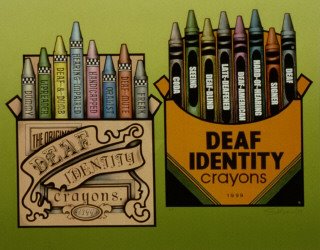Editor’s note: We are very pleased to host this post from sasha_feather, who has previously written for FWD: AWP: Crutch. FWD welcomes guest posts: please email guestposting [at] disabledfeminists.com for more information.
Sasha_feather is a science fiction/fantasy fan and anti-oppression activist. She is a contributor to Access Fandom
Book Review of The Rejected Body by Susan Wendell
by sasha_feather
The Rejected Body: Feminist Philosophical Reflections on Disability by Susan Wendell
1996
206 pages
Routledge Publishers
If you are at all interested in Disability Studies (DS), I strongly recommend this book. I felt like I had a kind, clear teacher and friend leading me by the hand through basic and advanced concepts in DS, especially relating to feminism and ethics. It is the most accessible and worthwhile academic text I’ve ever read– I don’t have a good track record for reading non-fiction books or textbooks, and I was riveted to this book. Partly this is because The Rejected Body speaks so directly to my own life experience as a person with a chronic illness. Susan Wendell also has a chronic illness, ME/CFS, which is what led her into DS from Women’s Studies.
In the introduction, the author tells you what she’s going to tell you, talks a bit about her own illness experience and finding disability identity, and–making me fall in love with this book–clarifies her language use by, in part, defining scare quotes and why/how she uses them:
“Throughout the text, I use single quotation marks as scare quotes, that is, to draw the readers attention to concepts I question or to uses about which I have reservations. For example, I use scare quote around ‘The Other’ (a concept discussed in Chapter 3) to indicate that, while the concept is a recognized way of thinking about people who are different from oneself, ‘the Other’ is not a way of referring to people which I accept or take for granted” (Wendell 7).
Like many of us I had often heard both the terms “scare quotes” and “the Other” and never really thought about what either of them meant. This book is full of little moments like that– things that I had taken for granted or that had niggled at my brain, and which the book shines a bright light upon.
In the introduction, Wendell also notes the limitations of the book, mainly that it focuses primarily on physical disabilities, that the author does not attempt to speak for all people, and that she struggles with generalizations and use of language. And that’s just the introduction!
A few of my favorite parts that I would like to highlight:
*The pace of life. As someone with fatigue and pain, Wendell is interested in the pace of life as part of the social construction of disability. Those of us who need to think or move more slowly than others are thus disabled by society. She discusses the social construction of disability in chapter 2.
*The mind, the body, and suffering. I have been thinking about embodiment lately, brain-body duality vs. integration, and chapter 7 (“Feminism, Disability, and Transcendence of the Body”) really gave me some grist for this mill. I am going to re-read this chapter shortly, especially the section on pain. Basically, feminists have argued against mind-body duality for very good reasons: because this concept has been used against women’s bodies. We’ve been invested in “Our Bodies, Ourselves”. But for bodies that are suffering and in pain, there are reasons to want to transcend the body, and there is room within feminist frameworks to develop such an understanding: of being embodied, of having bodily autonomy, and yet still wanting to transcend the body and be less tied to the body’s functions, desires, and pains.
*The illusion of control. For PWD, we know that we often do not have control of our bodies, or at best have limited control, and it is sheer luck that determines what happens, a lot of the time. Will I be in less or more pain today? Will I get some new illness? I have basically no control over these things, and I know it. And yet the society I live in is incredibly invested in the illusion of control to the point where it is part of the mythology of my country and my people. As Wendell points out, this puts me at odds with the people around me, even in casual social situations where people talk about small health problems or things to do with their bodies. It’s a disconnect.
*Having no diagnosis Wendell specifically addresses issues of disability for people with no diagnosis. There are a lot of people in this category, and it sometimes can feel like there is no place for us, no identity, especially within the medical model. The disability community, in my experience, creates a place and identity for those of us without a diagnosis.
There were so many other things that I am probably forgetting. I wanted to underline everything. I read it slowly to give myself time to process everything I was reading, but overall it’s a fairly short and accessible book, just densely packed with great information and ideas. Note that because it’s published by an academic press, it is relatively expensive; I recommend searching World Cat to find copies in libraries near you.
Moderator’s note: Moderation on guest posts is often much slower than “usual” moderation times.

